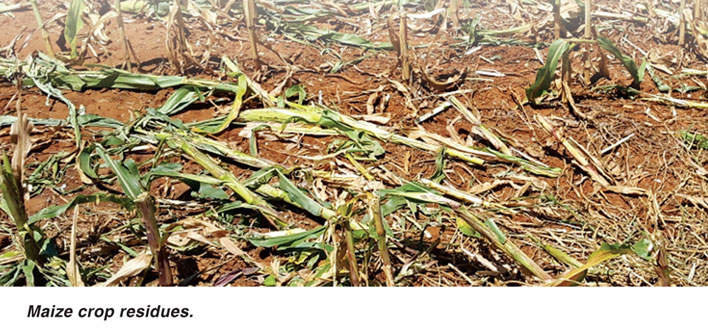June 2015

In drought years like this it feels as though we are constantly looking for food for our livestock. Be it veldt or crop residues or silage. It feels as though we are always on the back foot trying to keep the animals bellies full.
In situations like this we are faced with a few options. Keep in mind that when managing your livestock herd you should always be considering cost effectiveness and profitability. As farmers we need to weigh up the cost of feeding an animal through a drought winter compared to selling it, albeit at a lower price. Feeding the animals on bought feed may end up costing as much as the animal is actually worth. Veldt quality and grazing is another huge concern in years like this. Often farmers are forced to use every last blade of grass which is a risky practice as it will affect the rejuvenation potential in the spring.
Let us take a look at these issues a little closer.
PROFIT, should always be at the forefront of a business decision. Obviously in drought years farmers should expect to take a few knocks here and there, but the goal should be to mitigate this as much as possible so that in the end, the hole is not so big that you can’t climb out of it. Therefore your first step should be to assess your situation. What feed do you have on hand? Is it roughage or does it have nutritional value? How long will it last into the winter? What supplements would complement the feed? How will this drought situation impact your conception, milk production and weaning percentage?
Always keep in mind that you want to have productive animals now and into the future. Remember that some of your actions today in the drought conditions will affect your veldt and grazing potential in years ahead, therefore having an impact on your future productivity. Be cautious not to overgraze the veldt, the more soil that is exposed the weaker your root structures become and therefore your veldt becomes a poorer quality which will take much longer to rejuvenate. You always want to have a good basal cover of mulch and vegetation.
Once you know exactly what you have and exactly what your animals need then you can take action from there with a clear vision.
Remember to take into account the crop residues that you will have available after the harvest. It may be, as in many cases this year, that you will have very little or no crop at all. This is when you need to calculate exactly how you can best utilise the crop through your animals. If there are some kernels on the cob, then it may be a good option to cut your maize crop into silage. Silage is an excellent feed source through the winter and you can keep the animals in good condition by just feeding a little silage a day together with sufficient roughage and a protein supplement.
If the maize plant has no kernels on it, then it may be wiser to cut the maize and feed it as green feed. Or alternatively you can herd the cattle into the maize lands for a few hours a day and let them graze the maize down.
The benefit of having a maize crop in the ground, even if it is drought stricken, is that it gives you feeding options in the winter. Maize is an excellent energy source but remember that energy is not enough; your animal will also be in need of protein supplementation. This can be achieved in a few ways. You can buy protein licks from your local co operative which are made up of many important nutrients and minerals; the protein is supplied by urea in the lick. Many farmers also feed chicken litter which is purchased in bulk from chicken farms or distributors. This is a cost effective way to supply your animals with protein. There are risks however with feeding chicken litter and urea. Make sure that it is clean, sifted and preferably sterilised by the seller and be sure to vaccinate your animals for botulism before feeding the litter as there have been the occasional cases of botulism in cattle. When feeding urea based lick be sure to keep the lick dry and also do not feed it in rainy weather. When urea gets mixed with water it is extremely poisonous to animals.
As farmers we are morally obligated to keep our animals in good health and good condition. That is why before the dry season starts we should make calculated decisions about how we are going to do this especially in drought years such as the one we are currently experiencing. Remember that the management actions that we make today will affect our business circumstances in the future.
Article submitted by Gavin Mathews, Bachelor in Environmental Management.
For more information, send an email to gavmat@gmail.com.
Publication: June 2015
Section: Pula/Imvula